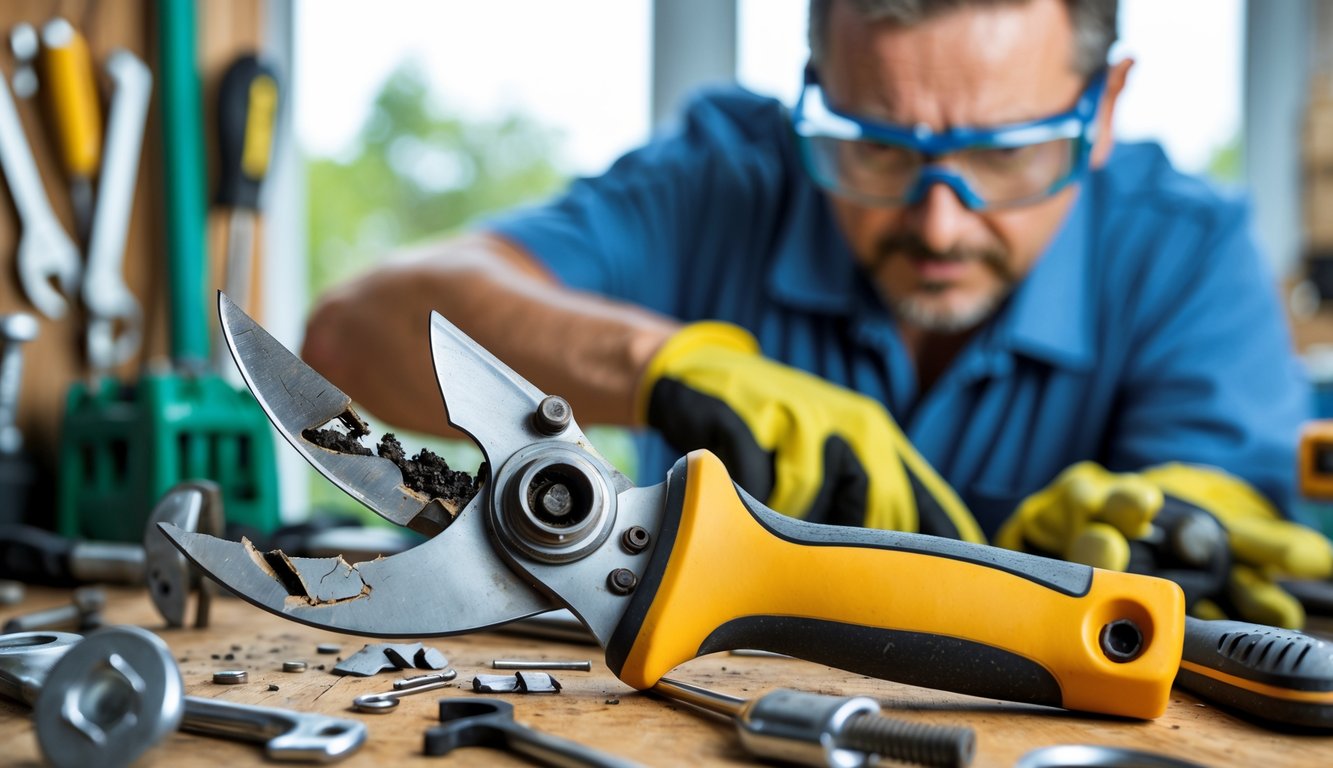
Operational Efficiency and Productivity Impacts
I’ve watched people fumble with busted shears, oil dripping everywhere, and everyone acts like that wasted half hour doesn’t matter. My uncle once glued trowel handles, as if glue could fix a tool that’s just wrong from the start. Performance drops? You feel it. It’s not subtle. Suddenly, all those “cost savings” are gone and you’re just fixing things over and over.
Equipment Performance Metrics
Numbers don’t lie, but they sure do hurt. When a tool design stinks, mean time between failures (MTBF) tanks, and those pretty efficiency charts turn into horror shows. I’ve heard from “industry experts” that the best-run places keep obsessive logs to spot patterns: they track uptime percentage and average repair cost per tool. I tried it. The cheap pruners I bought last year? Productivity fell off a cliff—like, 10% to 19% worse. Here’s a link if you want proof. The worst part is running back to the shed every hour or, worse, having to clean a tool that falls apart mid-scrub. My own logbook says it all:
| Tool Model | Weekly Downtime (hrs) | Average Repair Cost | MTBF (days) |
|---|---|---|---|
| Trowel X1 | 2.5 | $12.00 | 20 |
| Pruner Alpha | 1.1 | $9.75 | 44 |
| Spade Budget S9 | 3.8 | $16.50 | 15 |
Managing Downtime
Last week, I watched a neighbor swear at a jammed lopper for half an hour. Turns out, that clamp design hasn’t changed in a decade. Managing downtime is the least glamorous job, but that’s where your budget goes to die. My old boss used to rant that every ten minutes lost is a client lost. He wasn’t wrong. I mapped out our wasted time once—didn’t just add up, it exploded.
Best advice? Keep backup tools and fix stuff the second you notice a pattern. Because sometimes the factory sends out a batch of lemons, and downtime eats productivity faster than you’d believe. Rotate tools, obsess over preventive checks, and yes, keep duct tape handy, even though deep down you know it won’t fix the real problem.
Safety Hazards from Design Flaws
Let’s not pretend blade guards are optional. The last hedge trimmer I bought sounded like a chainsaw and nearly shredded my shirt. Blunt levers, exposed gears, awkward handles—these aren’t just annoyances. Supposedly, 3 million people have gotten hurt with garden tools in the last decade. I believe it. That’s not even counting the splinters.
Common Safety Risks
Blades should be sharp, but who puts a release lever where your glove snags every time? I saw a power edger that blows dust right into your face. Passed inspection, somehow. And don’t get me started on tools that force you to twist your wrist—my back is still mad about it.
Skip the rubber grips and the whole thing vibrates until it jumps out of your hand. Ergonomics isn’t marketing fluff; it’s the difference between a sore thumb and a trip to urgent care. My neighbor Ann sliced her finger open when a misaligned shear torqued the blade out of the handle. Manufacturers care more about looking cool than keeping you safe, apparently. The safety guides—like this one—always say to cut away from your body and avoid cheap plastic. Good luck finding that on the label.
User Training and Best Practices
Manuals love to say “maintain proper posture” as if everyone’s born knowing how. Training videos? They bury the good tips behind a wall of jargon. Who rewinds YouTube with dirty gloves, anyway? Garden club folks keep telling me to wear eye protection, but goggles fog up in five minutes and dust still gets in.
Nobody talks about tool storage. I’ve sliced my thumb grabbing a blade hidden under a pile more times than I’ll admit. Safety advice from the experts is great—don’t leave tools plugged in, keep chemicals high, hydrate—but if your phone’s buzzing and you’re mid-task, good luck remembering any of it.
Proactive Solutions for Preventing Breakdowns
Let’s be real—tool companies don’t care if you read the manual. They want you buying new stuff every year. But predictive maintenance and basic repair skills? That’s how you actually break the cycle.
Predictive Maintenance Strategies
“Predictive” sounds fancy, but here’s what I actually do: track weird noises, stop assuming every squeak means “buy new,” and set up reminders like it’s allergy season. I log handle splinters and rust patches in my calendar app. (Excel works too, but who has time?) It’s wild how fast you forget when something started acting up.
Regular checks on garden shears—monthly blade tension, oiling, bolt tightening—cut failures by more than half. That’s not hype; this chart says so, even if it looks like tax forms. No gimmicks, just consistency. Spotting pitted metal or stressed plastic early is the whole game. Nobody tells you the secret is reminders and logs, not wishful thinking.
There’s actual maintenance software, if you’re into that—stuff that nags you before your pruners seize. Even just a recurring phone reminder puts you ahead of the curve. An arborist I trust swears by it. I’m not saying it’ll save every tool, but it beats winging it and hoping for the best.